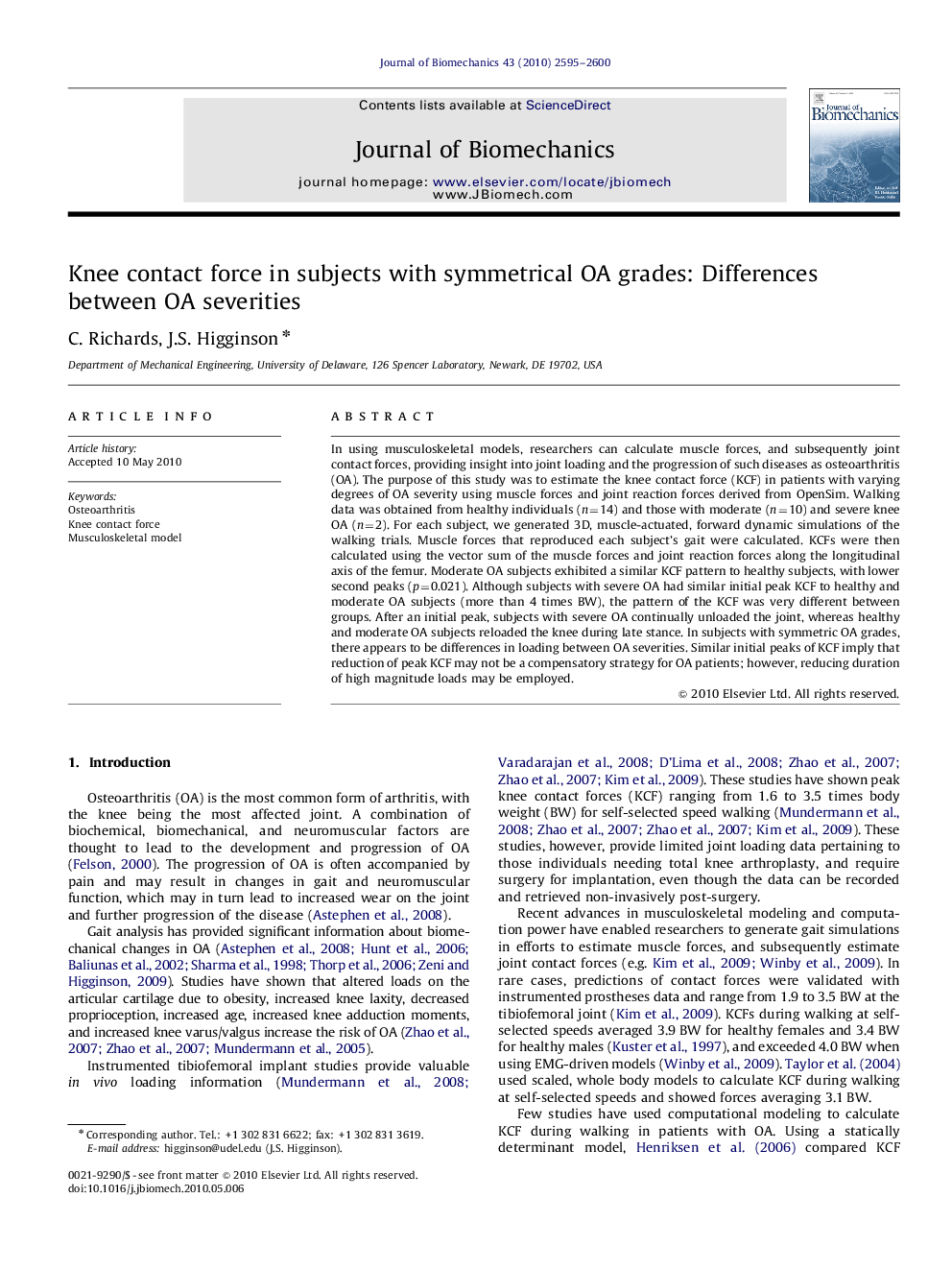| Article ID | Journal | Published Year | Pages | File Type |
|---|---|---|---|---|
| 873185 | Journal of Biomechanics | 2010 | 6 Pages |
In using musculoskeletal models, researchers can calculate muscle forces, and subsequently joint contact forces, providing insight into joint loading and the progression of such diseases as osteoarthritis (OA). The purpose of this study was to estimate the knee contact force (KCF) in patients with varying degrees of OA severity using muscle forces and joint reaction forces derived from OpenSim. Walking data was obtained from healthy individuals (n=14) and those with moderate (n=10) and severe knee OA (n=2). For each subject, we generated 3D, muscle-actuated, forward dynamic simulations of the walking trials. Muscle forces that reproduced each subject’s gait were calculated. KCFs were then calculated using the vector sum of the muscle forces and joint reaction forces along the longitudinal axis of the femur. Moderate OA subjects exhibited a similar KCF pattern to healthy subjects, with lower second peaks (p=0.021). Although subjects with severe OA had similar initial peak KCF to healthy and moderate OA subjects (more than 4 times BW), the pattern of the KCF was very different between groups. After an initial peak, subjects with severe OA continually unloaded the joint, whereas healthy and moderate OA subjects reloaded the knee during late stance. In subjects with symmetric OA grades, there appears to be differences in loading between OA severities. Similar initial peaks of KCF imply that reduction of peak KCF may not be a compensatory strategy for OA patients; however, reducing duration of high magnitude loads may be employed.
